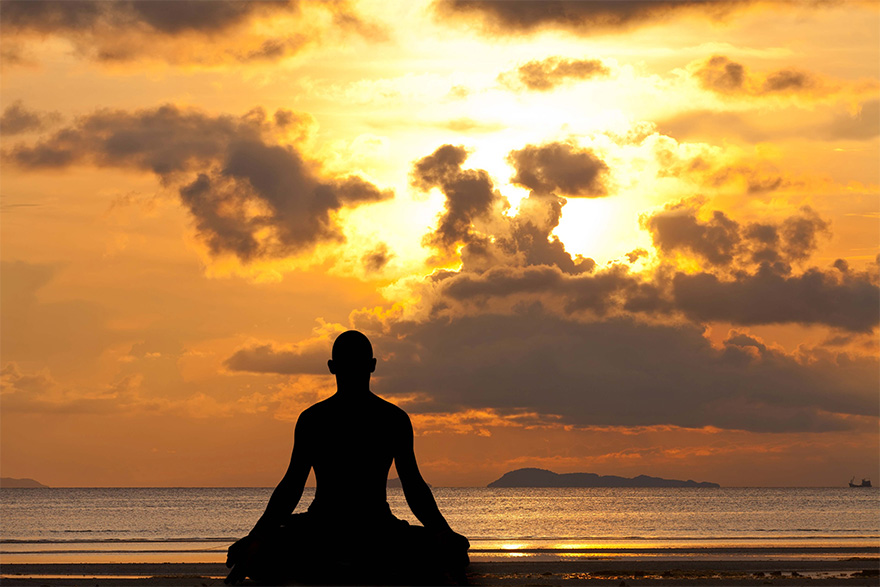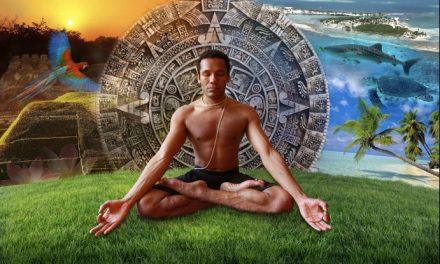The process of linking oneself with the Supreme is called yoga, which may be compared to a ladder for attaining the topmost realization. This ladder begins from the lowest material condition of the living entity and rises up to perfect self-realization in pure spiritual life. According to various elevations, different parts of the ladder are known by different names. But all in all, the complete ladder is called yoga and may be divided into three parts, namely, jnana yoga, dhyana yoga and bhakti yoga. The beginning of the ladder is called the yoga aruruksa stage, and the highest rung is called yoga arudha.
Concerning the eightfold yoga system, attempts in the begining to enter into meditation through regulative principles of life (yama, niyama) and practice of different sitting postures, asana (which are more or less bodily exercises), are considered fruitive material activities. All such activities lead to achieving perfect mental equilibrium to control the senses. When one is accomplished in the practice of meditation, he ceases all disturbing mental activities (chitta vritti nirodha).
Since the mind is the central point of yoga practice, the purpose of the yoga system is to control the mind and to draw it away from attachment to sense objects. It is stressed that the mind must be so trained that it can deliver the conditioned soul from the mire of nescience. In material existence one is subjected to the influence of the mind and the senses. In fact the pure soul is entangled in the material world because of the mind’s false ego which desires to lord it over material nature. Therefore, the mind should be trained so that it will not be attracted by the glitter of material nature, and in this way the conditioned soul may be saved. One should not degrade oneself by attraction to sense objects. The more one is attracted by sense objects, the more one becomes entangled in material existence.
[wp_ad_camp_1]
In the yoga sutra of Patanjali, as long as the soul is attached to sense enjoyment, it is called pratyag-atma. The soul is subjected to the functions of ten kinds of air at work within the body, and this is perceived through the breathing system. The Patanjali system of yoga instructs one on how to control the functions of the body’s air in a technical manner so that ultimately all the functions of the air within become favorable for purifying the soul of material attachment. The senses interact with the sense objects, outside the self, engaged in activities which are functions of the prana. When one has withdrawn from such activities in matter, the soul is called pratyag-atma. By practicing control of the mind and avoiding all kinds of sense-gratification one becomes pratyag-atma. This is the immediate goal of yoga according to Patanjali.
The next step is to discover and see the localized form of Vishnu, the plenary representation of Krishna, dwelling within one’s heart. One who seeks an improvement in health or aspires after material perfection is no yogi. In fact, by practice of yoga one becomes gradually detached from material concepts. This is the primary characteristic of the yoga principle. The next principle is that one becomes situated in trance or samadhi which means that the yogi realises the Supersoul through transcendental mind and intelligence, without any misgivings of identifying the self with the Supersoul.
Purusartha sunyam means devoid of pursuits of religiousity, economic development, sense gratification and the attempt to become one with the Supreme in liberation. Gunanam pratipravasah means free from the influence of the modes of nature. Svarupa pratistha va chiti saktiriti means becoming situated in one’s constitutional position by an internal transcendental potency. This is the oneness or kaivalya accoring to Patanjali.
After the chitta-vritti-nirodha, or material cessation, the pratyag atma manifests spiritual activities or devotional service to the Supreme Lord. Liberation from this material infection does not mean destruction of the original eternal position of the living entity. The chiti sakti or transcendental pleasure is the ultimate goal of yoga and is easily achieved by execution of devotional service, bhakti-yoga.














